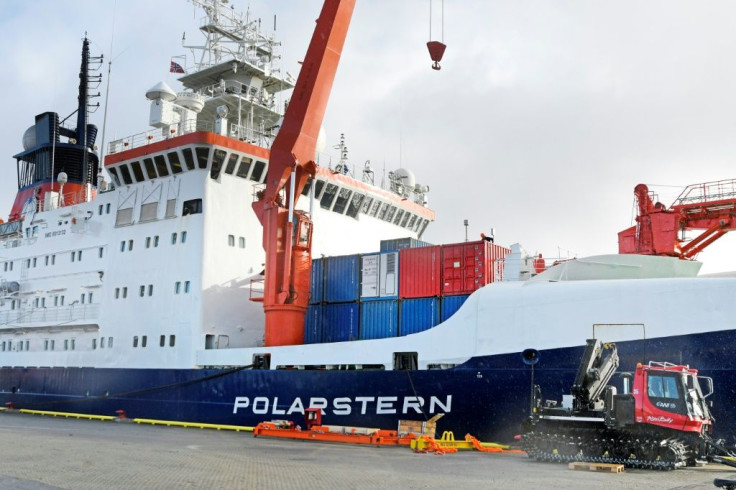Arctic Odyssey Ends, Bringing Home Tales Of Alarming Ice Loss
The biggest Arctic expedition in history will return to the German port of Bremerhaven on Monday after a year-long mission, bringing home observations from scientists that sea ice is melting at a "dramatic rate" in the region.
Coronavirus restrictions mean there will be no grand fanfare when the German Alfred Wegener Institute's Polarstern ship docks.
But the information gathered by researchers as the ship drifted through the ocean trapped in ice will be vital to helping scientists understand the effects of climate change.
In the summer, the researchers saw for themselves the dramatic effects of global warming on ice in the region, considered "the epicentre of climate change", according to mission leader Markus Rex.
"We could see broad stretches of open water reaching nearly to the Pole, surrounded by ice that was riddled with holes produced by massive melting," Rex said.
His sobering conclusion: "The Arctic ice is disappearing at a dramatic rate."
The researchers' observations have been backed up by US satellite images showing that in 2020, sea ice in the Arctic reached its second-lowest summer minimum on record, after 2012.
The Polarstern mission, dubbed MOSAIC, spent 389 days collecting data on the atmosphere, ocean, sea ice and ecosystems to help assess the impact of climate change on the region and the world.
To carry out the research, four observational sites were set up on the sea ice in a radius of up to 40 kilometres around the ship.
The researchers collected water samples from beneath the ice during the polar night to study plant plankton and bacteria and better understand how the marine ecosystem functions under extreme conditions.
The 140-million-euro ($165 million) expedition is also bringing back to shore more than 1,000 ice samples.
With the odyssey drawing to a close, work will begin in earnest on analysing the samples and data retrieved or recorded on site.

The analysis process will take up to two years, with the aim of developing models to help predict what heatwaves, heavy rains or storms could look like in 20, 50 or 100 years' time.
"To build climate models, we need in situ observations," Radiance Calmer, a researcher at the University of Colorado who was on board the Polarstern from June to September, told AFP.
The team used drones to measure temperature, humidity, pressure and wind speeds to create a picture of conditions in the region that will be "very useful for establishing a climate model", Calmer said.
Recounting her experience on the mission, the researcher said being able to walk across the ice and experience those conditions first-hand was a "magical" moment.
"If you concentrate, you can feel it moving," she said.
"It's important to take the time to observe, not just focus on your work."
Since the ship departed from Tromso, Norway, on September 20, 2019, the crew have seen long months of complete darkness, temperatures as low as -39.5 Celsius (-39.1 Fahrenheit) -- and around 20 polar bears.
The mission was almost derailed by the coronavirus pandemic in the spring, with the crew stranded at the North Pole for two months as borders slammed shut.
A multinational team of scientists was due to fly in as part of a scheduled relay to relieve those who had already spent several months on the ice, but the plan had to be redrawn when flights were cancelled across the world as governments scrambled to halt contagion of the coronavirus.
During the course of the expedition, several hundred researchers from 20 countries spent time on board the German ship as it travelled with the ice along a wind-driven route known as the transpolar drift.
The voyage was a huge logistical challenge, not least when it came to feeding the crew -- during the first three months, the ship's cargo included 14,000 eggs, 2,000 litres of milk and 200 kilogrammes of rutabaga.
The ship's cook, Sven Schneider, did not underestimate the importance of his role in the mission.
"It was my job to maintain the morale of 100 people living in total darkness," he said in an interview with German weekly newspaper Die Zeit.
© Copyright AFP 2024. All rights reserved.





















